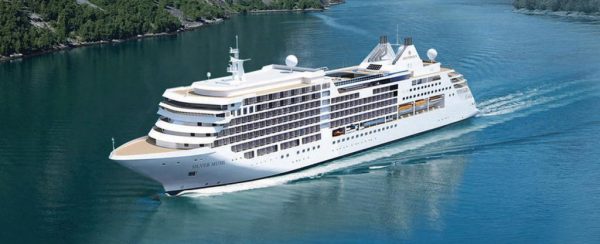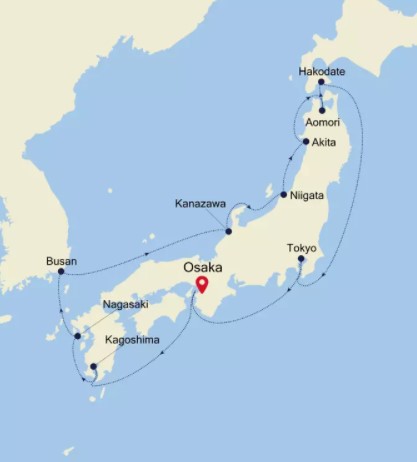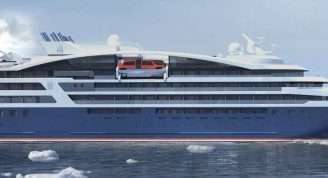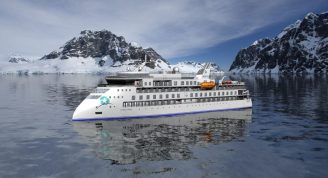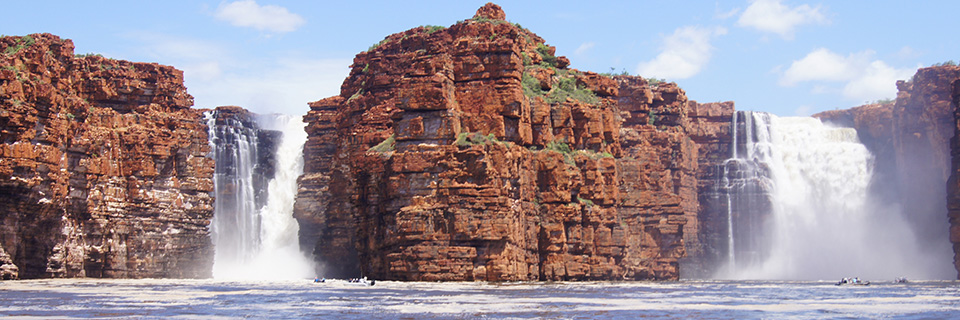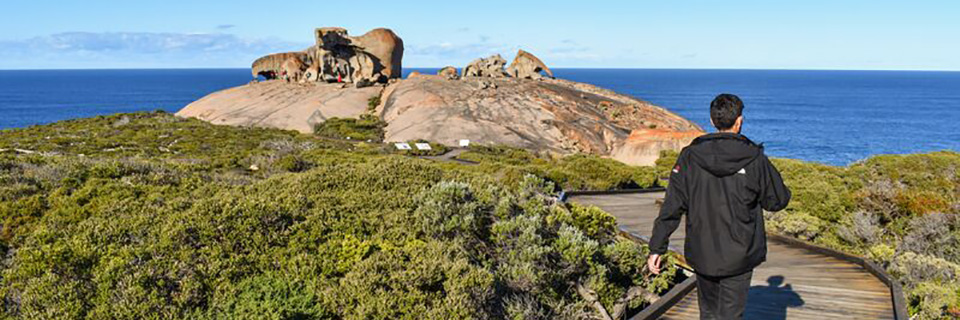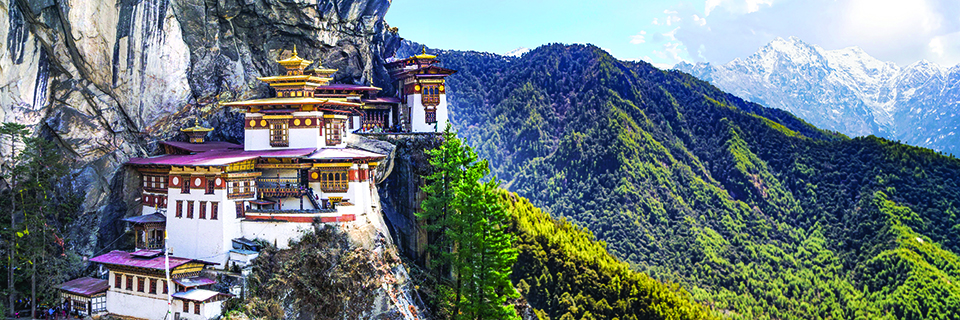Description
The Land of the Rising Sun has held travellers spellbound since time immemorial. Balanced by yin and yang, modern and traditional, fast and slow, this is a country of juxtaposition. Join us as we scratch beyond the surface, taking in both the extraordinary and beautiful along the way. Sailing to and from Osaka, enjoy experiences such as a volcanic sand bath in Kagoshima, the rich heritage of Kanazawa and the soaring peaks – both man-made and natural – of Aomori.
Trip Name
Osaka to Osaka aboard Silver Muse
Days
15
Overview
Vessel Type: Expedition Ship
Length: 212.8 metres
Passenger Capacity: 596
Built: 2017
Delivered in spring of 2017, Silver Muse was built by Fincantieri and at 40,700 grt accommodates 596 guests. Representing an exciting evolution of Silver Spirit, Silver Muse redefines ultra-luxury ocean travel - enhancing the small-ship intimacy and spacious all-suite accommodations that are the hallmarks of the Silversea experience. Silver Muse significantly raises the bar in the ultra-luxury cruise market with a wealth of enhancements to the onboard experience, while satisfying the uncompromising requirements for comfort, service, and quality of the world's most discerning travellers.
Dining
The Grill. Soft breezes and ocean views beckon at the Grill, especially as the sun goes down when cruise guests gather for cocktails at the outdoor bar and talk about the day’s events.
La Dame. La Dame features a bespoke menu by our top chefs, and is the highest expression of excellence of French dining.
Atlantide. Pivotal to Silver Muse dining experience, this elegant bar and grill incorporates the best that the sea has to offer.
Indochine. Evoking a sense of exotic mystery, the Asian-accented Indochine embarks you on an exquisite journey of culinary discovery.
La Terrazza. Authentic Italian recipes and the freshest, sustainable ingredients come together in this restaurant at sea.
Kaiseki. One of the most immediately recognisable characteristics of Japanese culture by its stunning costumes and elaborate make-up, the ancient art of Kaiseki theatre reflects a passion for tradition and performance.
Spaccanapoli. Reflecting Silversea’s Italian heritage, this emblematic street in Naples divides the city in two and is renowned for its pizzerias.
Silver Note. Small plate tapas-style dishes of mouth-watering international cuisine perfectly compliment the rich, exciting entertainment as the smooth sounds of jazz and blues gently caress your ears.
Public Areas
Fitness Centre. The Fitness Centre brings together elite design with programs that are specifically created for your body type and needs.
Connoisseur’s Corner. Rich and luxurious, yet airy and spacious, this indoor/outdoor venue is where you sip the finest cognac or whisky from a prestigious range and revel in the tranquil murmur of after-dinner conversation.
Dolce Vita. Dolce Vita is the gathering place for our savvy travellers of the world, a place where guests mingle and exchange stories and where new faces become lifelong friends.
Casino. Enjoy a selection of games at the Silversea Casino for guests 18 and older, or discover new games during your luxury cruise.
Zagara Beauty Spa. The Zagara Beauty Spa by Silversea is a sanctuary of pure bliss… Sweeping sea views from the floor-to-ceiling windows, nine treatment rooms, an acupuncture suite, relaxation areas and a dedicated outdoor whirlpool allow delectable indulgence on board.
Observation Library. Set on the highest level at the very top of the ship, this is a quiet space for reading and reflection while being dazzled by the undulating seascapes that are constituent to life on board.
Venetian Lounge. Welcome to Venetian Lounge, a place where the arts of theatre and music meet with full-scale productions and feature films.
Arts Café. Hosting various, exciting exhibitions, the Arts Café will showcase painting and sculptures from a broad range of talent.
Panorama Lounge. A peaceful retreat that is the perfect place to break away to, a social place to meet and greet old friends, or an evening venue to partake in a cocktail as you sit back and watch the world go by.
Pool Deck & Jacuzzi Area. Take a dip in the pool, relax in one of the whirlpools or simply soak up the view from one of the sunbeds, while your pool attendant anticipates your every whim.
Boutique. There is a wealth of luxury shopping experiences aboard all Silversea ships, featuring the most distinctive and appealing brands from across the globe.
Zagara Beauty Salon. Maintain your fresh look throughout your luxury cruise at the Beauty Salon. Services are available for men and women.


